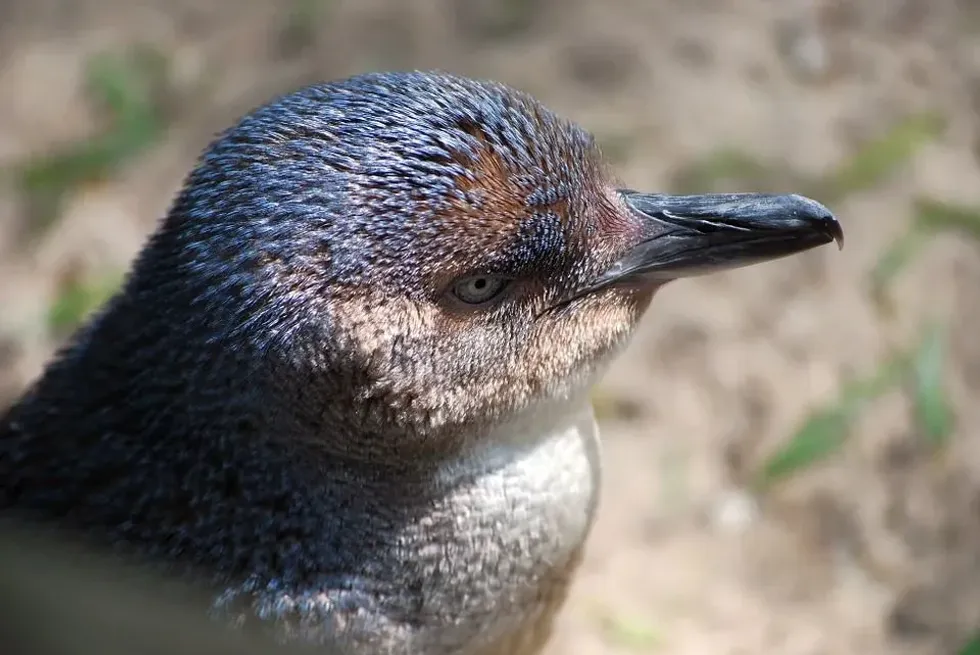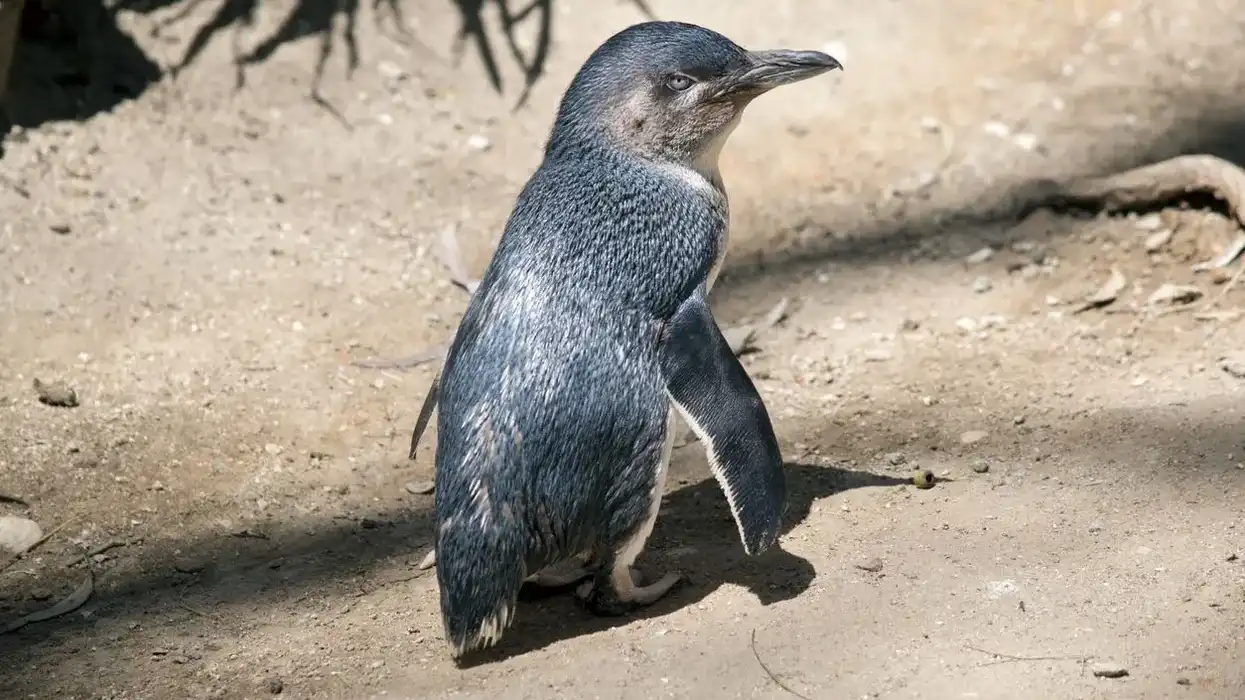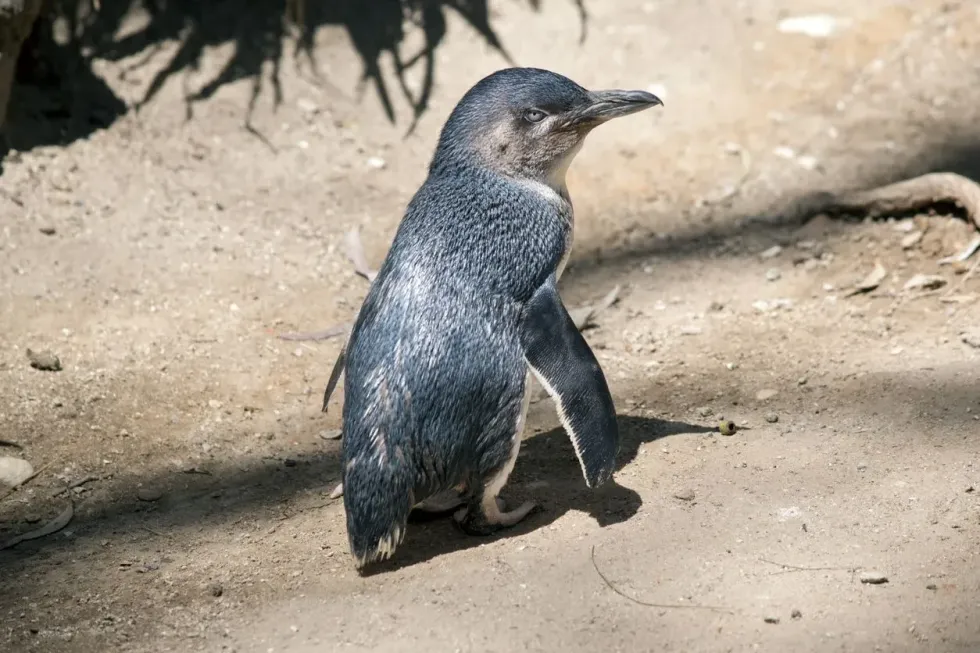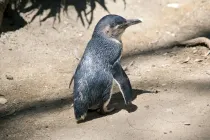Fun Little Penguin Facts For Kids

Penguins are the cutest birds present in New Zealand. The cutest kind of penguins are little penguins.
Little penguin (Scientific name: Eudyptula minor) are also known as fairy penguin and little blue penguin. These are the smallest penguin species in the world that can have a height of up to 13 in (33 cm) and a length of 17 in (43 cm).
They love to eat small fish and krill and can be found in New Zealand and Southern Australia.
Their name 'fairy penguin' is famous in Australia because of the small size that they have whereas, their other name 'blue penguin' is used mostly in New Zealand. Being diurnal, these birds are known to be active during the daytime.
Like humans, they get up really early and then go foraging for food, and swimming. In the evening, they come back to their burrows, feed their chicks, and sleep.
They love grooming each other by removing the parasites from each other's bodies. They also keep proper care of their flippers by preening them.
This helps in keeping them waterproof. Another thing that keeps the feathers of little penguins waterproof is the shedding of their old feathers that takes place annually.
Fairy penguins, or little penguins, are amazing at swimming and spend the majority of their time doing this. They can reach the floor of the sea if they dive. While swimming, they can easily swim 1.2-2.4 mph (2-4 kmph). Along with this, they are also amazing travelers and can migrate to far places.
If you loved reading about little blue fairy penguin facts, then you should definitely read our other articles on magellanic penguin and royal penguin.
Little Penguin Interesting Facts
What type of animal is a little penguin?
Little penguins (Eudyptula minor) are flightless birds. These birds are known to live below the equator. Although there are some island-dwellers inhabiting warmer climates, the majority of the species of penguins are found in Antarctica. Little penguins are known to be the smallest ones among the family Spheniscidae (the family of penguins).
What class of animal does a little penguin belong to?
Little penguins comes under the class Aves as they are birds.
How many little penguins are there in the world?
The count of fairy penguins is estimated to be around 350,000 to 600,000. These birds are bred across Australia and New Zealand. This breeding of aquatic animals is quite common.
Where does a little penguin live?
Little penguins live in Australia and New Zealand. This is the only species of penguin that breeds in Australia. Little penguins can be easily found throughout Southern Australia. Starting from Perth in Western Australia. They are also found near Coffs Harbour in NSW (New South Wales) on the north side.
Australia was the homeland to this species and they were pretty common in this area but now, their colonies are restricted to the islands. These islands are offshore ones. The largest colonies of little penguins can be found on Brush Island, Montague Island, and Tollgate Island.
Now, the only breeding colony that we know of is the breeding colony in New South Wales.
What is a little penguin's habitat?
Little penguin habitats consist of nests, sea caves, rocks, and headlands. Little penguins can be found living in a burrow that leads to their nest bowl. This nest bowl, which passes through a tunnel, is big enough for them to stand. The burrow can be a nest between big rocks or rock crevices in sea caves and rocky areas.
The natural environment for a little penguin, though, is the ocean. They prefer to live in temperate seas. They return to their homes at night time after they have spent their day at sea.
They waddle or stand upright when they are on land. The way they walk with their hind legs is really awkward but adorable. Penguin colonies of this penguin species can be easily seen on islands but their locations on the mainland are not completely known.
Who do little penguins live with?
Fairy penguins, another name for Eudyptula minor, usually live in a group. Sometimes, they do live alone and make their own nests, but mostly, they are seen in groups.
When the group of little penguins is on land, it is known as a waddle whereas, at sea, it is known as a raft. They live in pairs when it comes to the breeding season.
How long does a little penguin live?
The lifespan of a little penguin (Eudyptula minor) is about ten to 20 years. A fairy penguin, in captivity, can live up to 20 years but if they stay in the wild, they usually live around six to seven years.
How do they reproduce?
During their lifetime of seven years, male and female little penguins reach sexual maturity at the age of three and two years, respectively. Male fairy penguins return to the shore between the months of June and August to make new burrows.
They tend to display so that they can attract their mate for the season ahead. The male penguin little often competes with others by displaying.
The breeding season takes place every year but depending on the location and year, the breeding season varies. The breeding season starts in the spring and can last until the summer. These are the seasons when there is plenty of food available and the oceans are very productive.
Penguins are known to be faithful partners during the mating season and while the eggs are hatching. Other than these times, they might change burrows and have different partners. The fairy penguin species can mate in penguin colonies, as an isolated pair, or semi-colonially.
The species of little penguin can give birth to more than one egg. The incubation period of the eggs is 36 days and when the eggs hatch, the chicks brood for 18 to 38 days.
After seven or eight weeks, the chicks are left for fledging. Chicks are usually raised from the months of August to March on the Australian Southern coast.
What is their conservation status?
The IUCN gave the status of Least Concern to the penguin species since 1988. Several studies tell that the little penguin has a population of around one million around the globe. But according to the Biodiversity Conservation Act 2016, the species of fairy penguins is protected on Sydney Harbor as an Endangered species.
Little Penguin Fun Facts
What do little penguins look like?
The appearance of a little penguin is just like any other penguin species. The average length of the adults is 17 in (43 cm) and they weigh around 3.3 lb (1.5 kg).
However, males are a little heavier and a little longer when compared to the females. The color on their neck and flippers is blue-gray or slate blue whereas the color on the throat and underside is white. The color of their bill is black and they have pale pink-colored feet.

How cute are they?
The little penguin (Eudyptula minor) species is really cute. The way they waddle makes them look really adorable. But, even though they look cute, you should not forget that they can be fierce as well.
How do they communicate?
Every animal has a way of communicating and in this species, it is by their vocalizations and displays. The vocalizations of these penguins can be identified individually.
This allows their partners and chicks to recognize each other. It is an important part of their communication as it can be tough to recognize them in their large colonies just by the sight. Their calls have a trumpet-like sound or a low rumble.
The communication through displays includes their stance. Males have their heads facing up and their wings are backward. Then, they start braying to the females. A female who accepts the male joins it in the courtship dance where both the penguins make braying calls and march in circles.
How big is a little penguin?
The name says it all. A little penguin is the smallest one among the penguin species. They have a weight of 3.3 lb (1.5 kg) and a height of 12-13 in (30-33 cm).
How fast can a little penguin fly?
Even though a little penguin is a bird, it cannot fly. They are flightless birds, but great swimmers. They can fly underwater at speeds of 15-25 mph (24-40 kmph). These birds are known to spend the majority of their time in the water.
How much does a little penguin weigh?
The weight of the white-flippered smallest penguin species is 3.3 lb (1.5 kg). They are the smallest penguin species and hence, are not that heavy as other species can be.
What are the male and female names of the species?
The names of the males and females of the little penguin species are not specified. They are called by the same name. Although, they have other names. The other names for this penguin species are fairy penguins, blue penguins, and little blue penguins. They can also be referred to by their scientific (Eudyptula minor) name.
What would you call a baby little penguin?
The babies of the little penguin are called a nestling or a chick.
What do they eat?
Little penguin eat fishes mostly. Small fishes like pilchards and anchovies are their favorite food. This species uses their tails to guide them and their white-flippered bodies to swim. They like feeding in shallow waters, where they can find cephalopods and small fishes. They can even go to the bottom of the ocean to feed on krill and squids.
During foraging, they can travel huge distances every day but, during the breeding season they tend to cover shorter distances. After they have fed themselves, they return to the shore at dusk. They cross the beach and move to their burrows. This is known as the penguin parade.
Are they dangerous?
They are not dangerous if you are not threatening them. These are not very social birds so it's better if you choose not to get too friendly with them, as they can bite you if you try to touch them or hug them. Their beaks are very sharp and if they bite you, it is definitely going to hurt.
Would they make a good pet?
They are not the right kind of pets. First of all, you need a license to keep them as pets. Secondly, these birds demand high maintenance. You need the krill and special fishes to feed them every day.
As they live in water, they might die of dehydration if you keep them as your pet. Also, they need their companions and friends around them. So, you will have to get more penguins. It wouldn't be an easy task to try and domesticate these animals.
Did you know...
These are some of the best little blue penguin facts for kids: little penguins do the penguin parade on Philip Island around Summerland Beach which is also a tourist attraction; fairy penguins were valued for their feathers and skins by hunters in the 1800s; the eggs of the little penguin were considered a delicacy in the past; in 2001, a major oil spill that took place near Phillip Island affected 438 little penguins; incubating and chick-rearing are shared by the couple and fairy penguins can produce more than one clutch of eggs every breeding season.
Naming the little penguin
The scientific name of little penguins is Eudyptula minor. The word Eudyptulas has been taken from Greek meaning 'good little diver' and minor means the small stature of the animal.
Other than this, their names are fairy penguin, blue penguins, and korora. Korora is the native Maori word for this species.
Why is the little penguin endangered?
Fairy penguins are endangered because of various threats. Their predators are dogs, foxes, and cats that attack them on the mainland of Southern Australia.
If an adult penguin in a mating pair dies, it leads to the chicks death. Other than this threat, there are more threats faced by fairy penguins, such as the destruction of their habitat due to climate change, plastic pollution, lack of food because of overfishing and disturbance or destruction of the nests they make in rock crevices.
Here at Kidadl, we have carefully created lots of interesting family-friendly animal facts for everyone to discover! Learn more about some other birds including king penguin, or yellow-eyed penguin.
You can even occupy yourself at home by drawing one of our Little penguin coloring pages.
We Want Your Photos!
More for You
Sources
https://animaldiversity.org/accounts/Eudyptula_minor/
https://seaworld.org/animals/facts/birds/fairy-penguin/
https://en.wikipedia.org/wiki/Little_penguin
See All
Bachelor of Commerce specializing in Accounting and Finance, Master of Business Administration

Divya RaghavBachelor of Commerce specializing in Accounting and Finance, Master of Business Administration
With a diverse range of experience in finance, administration, and operations, Divya is a diligent worker known for her attention to detail. Born and raised in Bangalore, she completed her Bachelor's in Commerce from Christ University and is now pursuing an MBA at Narsee Monjee Institute of Management Studies, Bangalore. Along with her professional pursuits, Divya has a passion for baking, dancing, and writing content. She is also an avid animal lover who dedicates her time to volunteering for animal welfare causes.
Bachelor of Business Management

Yashvee PatelBachelor of Business Management
Yashvee has won awards for both her writing and badminton skills. She holds a business administration honors degree and has previously interned with social media clients and worked on content for an international student festival. Yashvee has excelled in academic competitions, ranking in the top 100 in the Unified International English Olympiad and placing second in an essay-writing competition. Additionally, she has won the inter-school singles badminton title for two consecutive years.
Disclaimer
1) Kidadl is independent and to make our service free to you the reader we are supported by advertising. We hope you love our recommendations for products and services! What we suggest is selected independently by the Kidadl team. If you purchase using the Buy Now button we may earn a small commission. This does not influence our choices. Prices are correct and items are available at the time the article was published but we cannot guarantee that on the time of reading. Please note that Kidadl is a participant in the Amazon Services LLC Associates Program, an affiliate advertising program designed to provide a means for sites to earn advertising fees by advertising and linking to Amazon. We also link to other websites, but are not responsible for their content.
2) At Kidadl, we strive to recommend the very best activities and events. We will always aim to give you accurate information at the date of publication - however, information does change, so it’s important you do your own research, double-check and make the decision that is right for your family. We recognise that not all activities and ideas are appropriate for all children and families or in all circumstances. Our recommended activities are based on age but these are a guide. We recommend that these ideas are used as inspiration, that ideas are undertaken with appropriate adult supervision, and that each adult uses their own discretion and knowledge of their children to consider the safety and suitability. Kidadl cannot accept liability for the execution of these ideas, and parental supervision is advised at all times, as safety is paramount. Anyone using the information provided by Kidadl does so at their own risk and we can not accept liability if things go wrong.
3) Because we are an educational resource, we have quotes and facts about a range of historical and modern figures. We do not endorse the actions of or rhetoric of all the people included in these collections, but we think they are important for growing minds to learn about under the guidance of parents or guardians.







